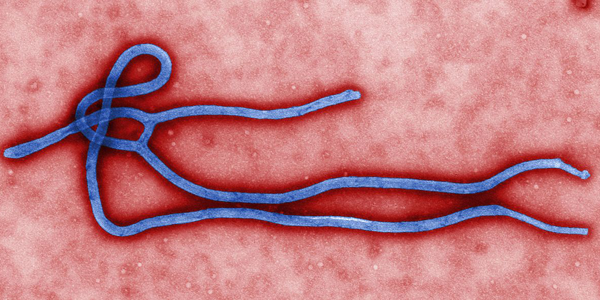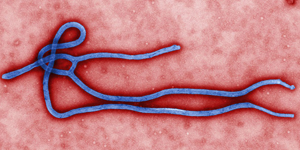Ebola Outbreak Reaches Epidemic Proportions in West Africa
The current Ebola crisis in West Africa has already topped charts for all Ebola outbreaks in history. Though there are potential medicines being tested, the path to an available antiviral treatment is one riddled with questions and precautions for biochemists. Medical biotechnology science projects let students gets hands-on with the kinds of real-world research and development scientists are doing, right now, as they face the ongoing Ebola health crisis.

While there are thousands of diseases out there that we hope our immune systems can fight off as we move from place to place, meal to meal, and situation to situation, there are a few keynote diseases and viruses that stand at the top of the pile in terms of the fear they inspire. SARS. Swine flu. Avian flu. Ebola.
The outbreak of Ebola in West Africa that appeared in spring 2014 and continues to spread is the first Ebola outbreak since late 2012-early 2013. The difference this time is that the final tally on recorded cases in 2013 was 413. Already more than 6,000 cases have been reported in West Africa this year, and a World Health Organization statement released on September 26, 2014, reports that more than 3,000 patients with Ebola have died.
The current Ebola crisis has already affected more than ten times the number of people who contracted Ebola in 1976, the year the virus first appeared and, until now, the worst outbreak on record. The number of cases continues to climb, which has led to alarming predictions about the escalation of the epidemic.
In a startling report last week, the Centers for Disease Control and Prevention (CDC) estimated that 1.4 million people may contract Ebola by January, 2015 in Liberia and Sierra Leone.
Where is the Medicine?
The exact cause of the Ebola outbreak has not yet been identified, but the mounting number of cases in West Africa has signaled alarm bells around the world because there is no proven preventative vaccine for Ebola or treatment for those who have Ebola. According to the CDC, "no specific vaccine or medicine (e.g., antiviral drug) has been proven to be effective against Ebola."
That doesn't mean researchers and doctors are not pushing boundaries in the race to find medical treatments. Researchers are looking for both a vaccine that may, in the future, help prevent someone from getting the Ebola virus and antiviral medicines that may help treat patients with the Ebola virus by reducing the duration of the illness, lessening symptoms, and decreasing the mortality rate associated with the virus. Antivirals are medicines used to treat a patient who already has the disease and work by blocking viruses from entering cells or replicating within cells.
For example, research is underway on ZMapp, a drug the CDC reports is being developed as a possible treatment for those infected with Ebola. The drug, "a combination of three different monoclonal antibodies that bind to the protein of the Ebola virus" is still in early stages of testing, however, and has, according to the CDC, not moved yet to testing in humans.
ZMapp may have potential as a future treatment for Ebola, but no Ebola-specific antiviral drug is available for immediate use to help doctors and patients who are battling the current Ebola epidemic. This reality has led some doctors to try existing antivirals (designed to treat other diseases) with Ebola patients.
A Real-world Science Project
A great deal of testing and research is necessary when developing new antivirals or exploring the possibility of using existing medications in the treatment of another disease. Students can explore the kinds of questions and challenges involved in the Hitting the Target: The Importance of Making Sure a Drug's Aim Is True medical biotechnology project.
In Hitting the Target, students use bioinformatics tools to explore questions related to research that has been done on Ebola and a potential antiviral that may be used to treat infected patients. A drug that binds to the NPC1 protein may work well as a successful Ebola antiviral, but what happens if the medication also binds with non-target proteins? This is the kind of question that biochemists and bioinformatics scientists must answer before a drug can be used to help treat patients.
What About Immunity?
While containment practices are critical in helping prevent the spread of Ebola in affected areas of West Africa, there are people who are immune to the disease, either because they have survived the virus, have possibly been in contact with small amounts of the virus before and not fallen ill, or possibly have some genetic immunity. Scientists do not yet know how many people may be immune and learning more about immunity and the antibodies present in those who are immune may help lead to the development of a vaccine. Students can learn more about how memory cells in the body help the body fight off repeat encounters with a virus in the Fighting the Flu: How Your Immune System Uses Its Memory science project.
What Triggered the Outbreak?
While reasons for the outbreak and the unparalleled spread of Ebola in the countries of Guinea, Liberia, Nigeria, Senegal and Sierra Leone are still being identified, the origin of the exposure may stem from bats, which are known to carry the disease and which are reportedly hunted (and eaten) in Guinea where the current epidemic may have started.
To read more about the possible relationship between bats and the current Ebola outbreak in West Africa, see:
- The animal source of the Ebola outbreak in West Africa eludes scientists
- Ebola: research team says migrating fruit bats responsible for outbreak
- Ebola Virus Outbreak Origin Traced To Bats - Report
Categories:
You Might Also Enjoy These Related Posts:
- Plastics and Earth Day - Science Projects
- Arduino Science Projects and Physical Computing
- 10+ Robotics Projects with the BlueBot Kit
- 5 STEM Activities with Marshmallow Peeps
- March Madness Basketball Science Projects: Sports Science Experiments
- Women in STEM! More than 60 Scientists and Engineers for Women's History Month
- Explore Artificial Intelligence and Machine Learning with Student AI Projects
- 10 Reasons to Do the Rubber Band Car Engineering Challenge










